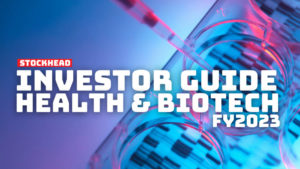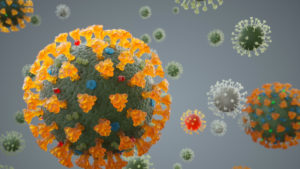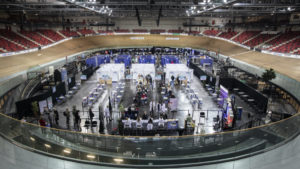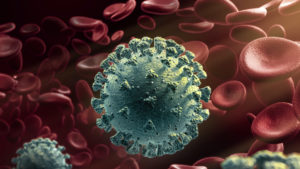COVID-19 vaccines are driving markets but treatments are where most people believe a solution to the pandemic lies.
However, use of the two most famous treatments to date — Gilead Sciences’ HIV drug remdesivir and US President Donald Trump’s favourite hydroxychloroquine — were initially based on hunches rather than hard data.
Scientists still don’t fully understand COVID-19. Only recently did doctors discover a link between the illness and strokes in young adults, and suspect a link with a hyper-inflammatory condition in children. But they do have a better picture of what leads to death.
“With the consensus forming that COVID-19 is an illness that causes both clotting and inflammation, problems likely requiring a combination of different approaches,” Morgans Financial senior analyst Derek Jellinek said this month.
“Confirmatory clinical trials remain months away and doctors are still a long way from having a complete picture of the virus and its effects”, so anecdotal data is informing which treatments work and which don’t.
There are about 102 options that have been tried or are in trials, according to the latest count by Artis Ventures, a venture capital firm. The Milken Institute, a think tank founded by infamous 1980s “junk bond king” Michael Milken, counted 223 treatments under consideration.
Many in the medical and science world believe COVID-19 will become a regular, seasonal illness that pops up every year, which means treatments are likely to be worth more financially to a company than a vaccine, which typically provide more kudos than cash to their owners.
In Australia, the race to get a treatment on the market is just as hot as those for diagnostics and vaccines.
No magic cure
If data around the two most famous treatments, remdesivir and anti-malarial drug hydroxychloroquine, are any indication, there is unlikely to be a single magic bullet to cure COVID-19 once a person has it.
A long-awaited global study into remdesivir was released last week in the The New England Journal of Medicine, preceded by one based solely in China published a week earlier in The Lancet.
The China study found “remdesivir was not associated with statistically significant clinical benefits” in a 237-patient, randomised, double-blind, placebo-controlled, multi-centre trial at 10 hospitals in Hubei.
The former study, a double-blind, randomised, placebo-controlled trial of 1063 patients around the world, found remdesivir was better than a placebo in shortening the time to recovery and lowering respiratory tract infection, but needed to be used alongside other drugs.
Former Australian politician Clive Palmer was given permission to import hydroxychloroquine in April. He said in newspaper ads he brought in 32.9 million doses, which were then put in a government stockpile.
But this drug also has been broadly discredited in clinical trials as a treatment for COVID-19.
An Australian study was launched last week involving thousands of frontline doctors and nurses by the Walter and Eliza Institute of medical Research (WEHI) in Melbourne to confirm Chinese studies that suggest whether hydroxychloroquine works as a preventative.
But the World Health Organisation (WHO) yesterday paused a global study into the drug as a treatment after a Lancet review found it was associated with a high risk of death and heart problems in COVID-19 patients.
What works and what doesn’t
Medical professionals have learned on the job what works and that appears to be a menu of treatments, Jellinek said.
That menu includes blood plasma from survivors that contains antibodies which could neutralise the virus, as CSL (ASX:CSL) is trialing; drugs to suppress the body’s immune response which some believe goes into overdrive, which is called a “cytokine storm”; anticoagulants to decrease the risk of blood clots; and antivirals like remdesivir.
Drugs that don’t appear to work are hydroxychloroquine, a HIV drug by AbbVie which showed no improvement in a 199-patient trial, and an arthritis drug by Regeneron and Sanofi which produced disappointing results.
“While WHO labelled COVID-19 as a “pneumonia-like” illness in February, prompting a focus on the lungs, with a surge in ventilators, as more COVID-19 presented to hospitals it became apparent that other organs were also impacted (eg kidneys, liver, intestines, skin, even the brain) and some patients have “silent hypoxia”, alarmingly low oxygen levels but show no shortness of breath, which results in pneumonia,” Jellinek said.
“So it appears this disease is not just a disease of the virus, but something else peculiar is happening to the human body to create a dis-regulated response. And this response can last a long time in some patients…up to two, three or even six weeks.”
Australian triers
A range of Australian companies have announced COVID-19 treatments, some of which are clearly opportunistic and others which may have some substance behind them. Some of these companies include:
Mesoblast (ASX:MSB) and Cynata (ASX:CYP) have launched clinical trials to see whether their stem cell therapies can help reduce the body’s overactive inflammatory response to the disease.
Mesoblast shareholders have benefited from the company’s fast-tracked US trials, with the stock back at five-year highs.
Cancer biotech Noxopharm (ASX:NOX) also claims the active ingredient in its drug, idronoxil, inhibits an inflammatory pathway when the body goes into overdrive against COVID-19.
The US Food and Drug Administration (FDA) is currently evaluating a pre-Investigational New Drug submission from Noxopharm. A pre-IND is an ‘introduction’ to the regulator, which can then decide whether to allow further studies go ahead.
Antiviral condom lube maker Starpharma (ASX:SPL) said in late April its active ingredient stopped COVID-19 infection in the lab. It has not provided any updates on this since.
Types of treatments
There are broadly four different angles that companies and research institutions can take towards a COVID-19 treatment.
Antiviral drugs developed for other viruses include remdesivir and Hepatitis C drug danoprevir.
They also include ribonucleic acid (RNA)-specific therapies. The COVID-19 genome is made of RNA; in order to replicate it needs to copy its RNA genome so drugs inhibiting this process can help.
Antibody therapies include CSL’s immunoglobulin plasma-derived treatment. These therapies are not like vaccines in that they don’t confer long-lasting immunity against a disease, but instead give the body immediate tools to fight off an infection.
The issues are scale — there are only so many people in the world who have had COVID-19 so only so much blood can be taken, and a survivor may not have a large number of antibodies in their blood anyway.
Cell-based therapies are those sponsored by Cynata and Mesoblast, which are primarily looking at ways to engage stem cells.
The last method is to look for drugs already in use for another illness and repurpose them for COVID-19. Hydroxychloroquine is one of these.
Researchers at the University of California in San Francisco found 47 drugs already approved by the FDA for use in the US which could have an effect on the COVID-19 virus, from antihistamines to schizophrenia drugs.
You might be interested in












